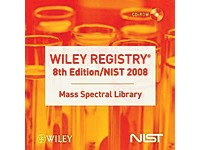Advertisement
Grab your lab coat. Let's get started
Welcome!
Welcome!
Create an account below to get 6 C&EN articles per month, receive newsletters and more - all free.
It seems this is your first time logging in online. Please enter the following information to continue.
As an ACS member you automatically get access to this site. All we need is few more details to create your reading experience.
Not you? Sign in with a different account.
Not you? Sign in with a different account.
ERROR 1
ERROR 1
ERROR 2
ERROR 2
ERROR 2
ERROR 2
ERROR 2
Password and Confirm password must match.
If you have an ACS member number, please enter it here so we can link this account to your membership. (optional)
ERROR 2
ACS values your privacy. By submitting your information, you are gaining access to C&EN and subscribing to our weekly newsletter. We use the information you provide to make your reading experience better, and we will never sell your data to third party members.
Physical Chemistry
Digital Briefs
New Software and Websites for the Chemical Enterprise
by Janet S. Dodd
April 3, 2006
| A version of this story appeared in
Volume 84, Issue 14
Software
ACD/Web Librarian is Web-based software for sharing and viewing spectral, chromatographic, and chemical data. The software allows chemists to securely access analytical results from anywhere via the corporate intranet or a secure Internet link, to search and retrieve information by spectral parameters or chemical structures, and to create instant reports. Users can view more than 130 file and database types, including 1-D NMR, 2-D NMR, UV-Vis, IR, Raman, and mass spectrometry; chromatography; X-ray powder diffraction; differential scanning calorimetry; and thermogravimetric analysis, as well as chemical structures and metadata. Key new features of this release include convenient display of hyphenated data sets, which allow users to scroll through and view individual scans. The operating system is Windows, and the client is Oracle Database 8.1.x. Advanced Chemistry Development, www.acdlabs.com
Reaction Engineering Lab sets up models of reacting systems that involve many reactants with continually changing concentrations. These models can be compared with experimental measurements. A graphical user interface lets scientists describe chemical engineering problems in a straightforward manner, by entering the chemical reaction formulas as they would write them on paper. The software creates the corresponding kinetic expressions and material and energy balances using the mass action law or a user-defined expression. The influence of different assumptions and reaction mechanisms can be investigated efficiently. The software can also calculate thermodynamic and transport properties of reacting mixtures. The end result of these computations is a plot or table of the system behavior. The software runs on Windows, Linux, UNIX, and Mac OS X computers. Comsol, www.comsol.com
Odyssey 2.0 is instructional software for hands-on exploration of molecular concepts in introductory chemistry classes in high schools, colleges, and universities. The software features an integrated molecular dynamics simulation engine and provides interactive activities covering a variety of fundamental chemistry topics. Molecular simulations are carried out in real time. Odyssey includes a collection of student-assignable worksheets, an assortment of fully developed experiments, an annotated library of molecular models, property and plotting modules, and a model kit for building user-defined systems. Molecular visualization includes an effective display of molecular motion and electron-density surfaces and orbitals. The software is compatible with Windows. Wavefunction, www.wavefun.com
Rotate creates a user-controlled set of molecular conformations starting from a given 3-D model. It provides methods for fully or partially exploring the conformational space in order to influence the number of output conformations by retaining a maximum of structural diversity. The software processes large data sets of chemical structures, such as those from databases or combinatorial chemistry experiments, in a variety of file formats. It is applicable to the entire range of organic chemistry, pharmaceutical lead discovery and lead optimization, quantitative structure-activity and property relationships, flexible docking experiments, and prediction of chemical reactivity. Rotate is available for common UNIX workstations. Molecular Networks, www.mol-net.de
Databases
Scopus, a comprehensive database of scientific literature, is updated daily. It includes the abstracts, references, and indexes of more than 14,000 scientific, technical, and medical (STM) titles from more than 4,000 international publishers. It helps researchers easily and quickly obtain the literature they need, evaluate its relevance, and manage it effectively. It provides seamless links to full-text articles and other library resources. Elsevier, www.elsevier.com
The Mass Spectra of Designer Drugs collection, available on SpecInfo, contains 1,400 chemical compounds and 1,700 mass spectra. In reaction to recent terrorist activities, about 100 chemical warfare agents, such as sarin and tabun, have been added. In addition to structural formula and spectrum, the following information is also included: chemical structure, chemical name, molecular formula, molecular weight (nominal mass), biological effect, and measurement conditions. Wiley Interscience, www.inter science.wiley.com/db
Online
3D-Seek is a new kind of search engine that lets users find items in an online catalog without knowing the items' names, part numbers, or keywords. All the user needs is a freehand sketch. The 3D-Seek catalog currently contains more than 6,000 parts and continues to grow as suppliers manually upload their files or as the system's i-crawler Web spider discovers parts online. National Science Foundation, www.nsf.gov
Organic Chemistry Resources Worldwide is a website designed for organic chemists. It collects and annotates all useful organic chemistry sites and presents them in an intuitive way. This low-graphics, quick-loading guide has no access restriction, is available for a worldwide audience, and requires no registration or user fee. www.organicworldwide.net






Join the conversation
Contact the reporter
Submit a Letter to the Editor for publication
Engage with us on Twitter